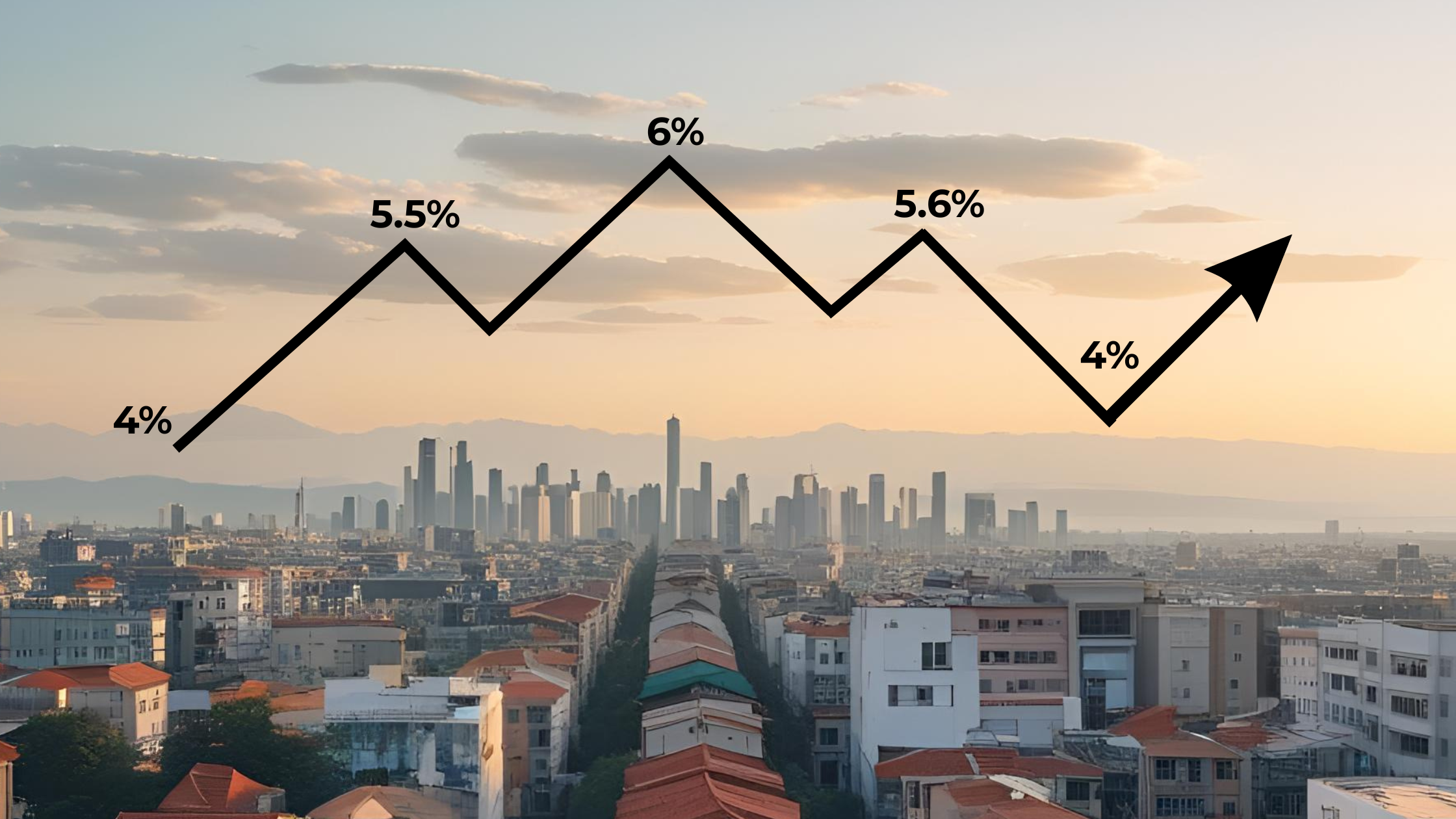
The 'Institutional' Tax: Are You Paying a Premium for Prestigious Partners?
By Adam Gower
The 'Institutional' Tax: Are You Paying a Premium for Prestigious Partners?
There's an unmistakable allure to investing alongside prestigious institutional investors in private real estate deals. Call it the "Harvard Effect" – the reassuring sensation that if elite endowments, pension funds, and sovereign wealth managers have vetted and approved an opportunity, it must be exceptional. This gravitational pull toward institutional validation is powerful, creating a halo effect that sponsors eagerly leverage in their marketing materials and capital-raising efforts.
When an LP sees Harvard's endowment, CalPERS, or Blackstone on the cap table, it creates an immediate sense of validation and comfort. But this comfort comes at a cost - what I call the "Institutional Tax," a premium that investors pay simply for the privilege of aligning with blue-chip names.
This premium manifests not just in higher entry valuations, but often in compressed returns and less favorable economic terms. The critical question for today's sophisticated limited partner is whether this premium truly reflects enhanced investor protections and superior deal quality, or if it's primarily a psychological security blanket with a tangible cost to your bottom line.
For LPs navigating an increasingly complex private real estate landscape, understanding when institutional backing genuinely adds value - and when it merely adds cost - is vital to optimizing your allocation strategy and maximizing risk-adjusted returns.
What is the Prestige Premium?
The institutional premium manifests in several observable ways in private market transactions. Understanding how this premium operates is essential for LPs making allocation decisions.
When institutional investors participate in deals, entry valuations typically increase. This occurs through compressed cap rates in real estate or elevated multiples in private equity transactions. The pricing differential directly impacts return potential from inception.
This premium stems primarily from institutional investors' capital deployment pressures. With large funds and defined investment periods, established managers face significant pressure to place capital, often prioritizing deployment over maximum return optimization.
The psychology behind this premium cannot be overlooked. LPs frequently accept lower projected returns from institutional deals due to perceived safety. This perception creates a market inefficiency where the cost of this perceived safety may exceed its actual value.
The institutional premium extends beyond initial pricing into deal structures themselves. Terms often become more sponsor-favorable with institutional managers – including management fee levels, promote structures, and governance provisions that may limit LP protections compared to terms available from emerging managers seeking to build their reputation.
Understanding these dynamics allows LPs to make more informed decisions about when the institutional premium represents fair value versus when it constitutes an opportunity cost worth avoiding.
The Data Behind Institutional Returns
The central question for any LP is whether paying the institutional premium delivers superior performance. Historical data presents a nuanced picture that challenges conventional wisdom.
When comparing net returns across manager types, performance patterns frequently surprise newcomers to the private markets. Established institutional managers typically deliver more consistent but often lower returns than their emerging counterparts. This pattern becomes particularly evident in middle-market strategies where emerging managers can capitalize on overlooked opportunities.
Fee structures significantly impact these performance differentials. Institutional managers with strong brand recognition command premium economics that directly affect net returns to LPs. The cumulative impact of these fee differences compounds meaningfully over fund lifecycles.
The opportunity cost of the institutional premium becomes apparent when comparing similar investments with different sponsor types. Identical assets with varying entry points due to sponsor reputation create measurable return differentials over typical hold periods. This differential represents the quantifiable cost of the institutional premium.
Risk-adjusted performance adds another dimension to this analysis. While institutional backing may mitigate certain operational risks, the question remains whether this risk reduction justifies the corresponding return sacrifice. Sophisticated LPs carefully evaluate this risk-return tradeoff rather than defaulting to institutional managers based on perceived safety alone.
When Institutional Backing Actually Adds Value
Despite concerns about the institutional premium, there are specific situations where institutional backing genuinely merits its cost.
Governance Capabilities
Governance capabilities represent one clear advantage of established managers. Institutional investors implement robust oversight frameworks, compliance procedures, and reporting systems that benefit all stakeholders. These structures provide meaningful value particularly for complex assets or during challenging market conditions.
Proprietary Deal Flow Access
Access to proprietary deal flow constitutes another legitimate benefit. Elite institutional sponsors cultivate networks that generate opportunities unavailable to other market participants. This sourcing advantage can sometimes offset the premium pricing these managers typically command.
Management Standards
Professional management standards also add tangible value in certain contexts. The operational infrastructure of established institutional managers provides advantages through sophisticated accounting systems, well-developed asset management protocols, and institutional knowledge captured across market cycles.
Resistance to Market Disruptions
Market disruptions highlight another scenario where institutional backing proves valuable. During capital constraints or market stress, institutional investors' financial strength and lending relationships provide stability that smaller managers may struggle to match.
The key for discerning LPs is developing a framework to identify when these advantages genuinely merit the premium being charged, rather than accepting institutional pricing as universally beneficial regardless of strategy or market environment.
The Emerging Manager Advantage
Emerging managers offer compelling advantages that often make them attractive alternatives to their institutional counterparts for performance-focused LPs.
Track record analysis reveals a counterintuitive pattern: first and second-time funds frequently deliver strong returns relative to established managers. This outperformance stems from structural advantages including greater selectivity in deal choice, more focused investment strategies, and intense motivation to establish reputation.
Be Hungry
The "hunger factor" represents a powerful force driving emerging manager performance. These managers typically exhibit stronger motivation to prove themselves and establish their market position. This drive translates to more rigorous due diligence, creative deal sourcing, and higher-touch investor relations.
Aligned Interests
Economic alignment through co-investment creates another significant advantage. Emerging managers generally commit larger percentages of personal capital relative to fund size. This meaningful "skin in the game" creates powerful incentives that larger institutional players struggle to match proportionally.
Risk Mitigation Matters
Risk mitigation remains the primary concern for LPs considering emerging managers. Sophisticated investors address this through targeted strategies: focusing on managers with relevant prior experience at established platforms, negotiating enhanced governance rights, structuring investments with appropriate protection mechanisms, and starting with smaller allocations to build relationships gradually.
These advantages make emerging managers worthy of serious consideration within diversified private market portfolios, particularly for LPs seeking alpha generation beyond what institutional managers typically deliver.
Creating a Balanced Portfolio Approach
The institutional tax doesn't necessitate an all-or-nothing allocation strategy. The most sophisticated LPs develop frameworks balancing institutional stability with emerging manager upside potential.
When evaluating institutional sponsors, focus beyond reputation. Consider whether their specific advantages—scale, relationships, operational expertise—truly matter for the particular strategy they're executing. Some investment approaches benefit tremendously from institutional infrastructure; others actually suffer from it.
Before committing capital to blue-chip names, investigate how their teams are incentivized and whether key professionals have meaningful carried interest. Examine their track record carefully, with special attention to performance in difficult market environments.
Many LPs find exceptional value in the middle market—investing with established but not enormous managers who maintain entrepreneurial cultures while offering institutional-quality operations. These managers often combine the hunger of emerging sponsors with sufficient scale to access attractive opportunities.
A balanced portfolio might allocate capital across tiers of managers based on specific objectives. Core positions with blue-chip managers provide stability, while allocations to emerging managers offer alpha potential. This balance shifts based on market conditions—institutional players offering greater value during distressed periods, while emerging managers shine in competitive markets.
When evaluating non-institutional opportunities, focus on differentiated edge and sustainability. Strong emerging managers typically have clearly articulated investment theses explaining why their approach works specifically for them. They understand their limitations and focus where they have genuine advantages.
Conclusion
The institutional tax represents a real phenomenon with significant implications for portfolio construction and return expectations. Limited Partners who automatically default to institutional managers without questioning the value proposition may be sacrificing meaningful return potential.
The key insight for sophisticated investors isn't that institutional managers should be avoided –rather, that their involvement comes with quantifiable costs that must be weighed against their genuine benefits. In some strategies and market environments, institutional backing truly adds value commensurate with its premium. In others, it represents an inefficiency that creates opportunities for more discerning capital.
By developing a framework to evaluate when institutional backing matters and when it simply adds cost, LPs can make more intentional allocation decisions. This approach allows investors to capture the benefits of institutional backing where warranted while exploiting the inefficiencies created by the institutional tax elsewhere.
The most successful private market portfolios typically include both established institutional managers and carefully selected emerging sponsors, with allocations balanced according to specific strategic objectives, market conditions, and risk parameters.
As with many aspects of private market investing, conventional wisdom often proves incomplete. The reflexive assumption that institutional backing guarantees superior performance deserves serious reconsideration based on historical data and the structural factors that drive true investment outperformance.
Written by
Adam GowerAdam Gower is the Founder of GowerCrowd. GowerCrowd builds digital marketing systems for seasoned real estate sponsors so they can find more investors, raise more capital, and scale faster.
Other Articles

What Is a Capital Stack?
Every real estate deal needs funding, which is why real estate syndication and private equity investments have become so widespread. However, where that money comes from and in what order it gets repaid isn't random. It's structured carefully, layer by layer, in what's known as the capital stack.

Power of Community in Passive Investing | Brian Davis
Brian Davis shares how Spark Rental's co-investing club vets deals, evaluates operators, and helps investors build passive income

What is a Capitalization Rate in Real Estate
Learn about cap rates, how they are used in commercial real estate, and how investors should consider them when evaluating passive real estate investments.

Evaluating Real Estate Sponsors: The Role of Social Proof in Investment Decisions
This article explores the role of social proof in evaluating real estate sponsors, the risks of relying solely on past returns, and the dangers of influencer marketing in investment decision-making.

What is a Syndication Real Estate Investment?
A real estate syndication is a common investment structure that pools capital from multiple investors to acquire and manage larger commercial real estate assets.

Using AI, Community, and Transparency to Build a Better Investment Firm with TJ Burns
TJ Burns, founder of Burns Capital and ex-Amazon engineer, joins the Invest Clearly Podcast to break down the real challenges of raising capital and building long-term LP trust.